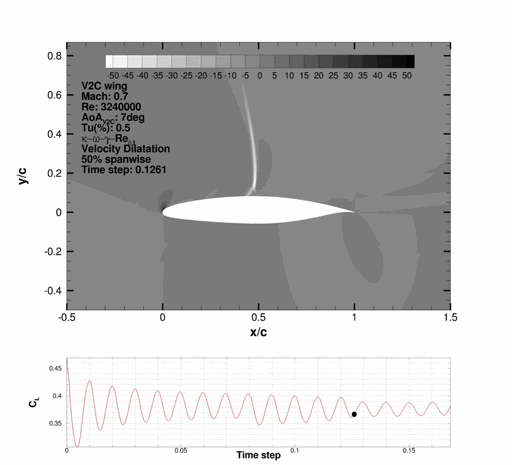Shock Boundary Layer Interaction
Aligned with the needs of the aeronautical industry the general aim of the Transition Location Effect on Shock Boundary Layer Interaction (TFAST) project is to avoid the laminar boundary layer to be penetrated by the shock wave. The benefits of having laminar boundary layer are so important that the transition should occur as late as possible. The topic of transitional interaction with a shock wave is the most challenging problem in aeronautics. Although in the past several EU projects were aiming at laminar or turbulent investigation of the area of unsteady shock wave boundary layer interaction, TFAST project is concentrated on the study the effect of transition location on the structure of interaction. The main question is how close the induced transition may be to the shock wave while still maintaining a typical turbulent character of interaction.
The main emphasis of the project is placed on closely coupled experiments and numerical investigations to allow for feeding back numerical results to experiments and vice versa for the sake of identifying and overcoming weaknesses in both approaches. Using RANS/URANS methods, TFAST will assess new methods for transition modeling in particular for unsteady, shock dominated flow. TFAST will provide a selection of appropriate flow control methods for CFD computations as well as physical of these devices. One of the important objectives is how to combine the flow control methods with transition methods.
Current Work
CFD Lab has performed RANS, and URANS computations for the flow around the V2C aerofoil in 2D and 3D configurations and the 3D wing. The buffet boundary of the V2C section has been approximated using turbulence and transition modelling within the URANS framework while additional work has been carried out to explore the modelling of flow control devices. Further work on current method for modelling surface roughness has been carried out looking at surface models suitable for the URANS framework. The intermittency-based model was enhanced with a new empirical criterion in order to predict laminar-turbulent transition due to crossflow instability mechanisms in 3D boundary layers.

Velocity dilatation for the V2C wing using LCTM transition model. (M = 0.7, Re = 3.24e6, AoA:7deg, and Tu = 0.5%)
Contacts
George Barakos - Professor, George.Barakos@glasgow.ac.uk



